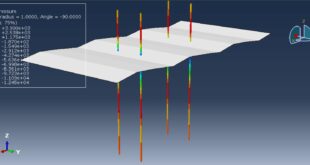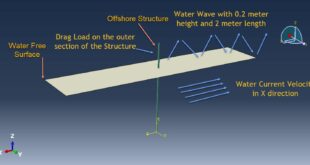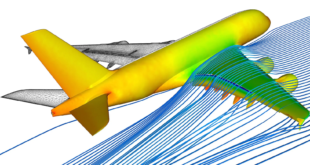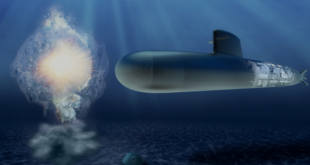In this tutorial, the Simulation of ceramic plates as shielding for concrete blocks against projectile penetration(SPH method) has been done. The ceramic plate and Ultra-High-Performance-Concrete are modeled as three-dimensional solid parts. The bullet is modeled as a solid part. You can see a figure of the assembled parts below
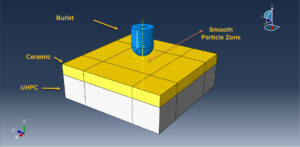
In civilian and military applications, over the years concrete has been used as a construction material for the construction of protective structures. Great demand exists for designing nuclear plants, power plants, military structures, water retaining structures, highway barriers, etc., to resist the penetration and perforation of concrete structures against kinetic projectiles, generated both accidentally and deliberately, in various impact and blast scenarios. When a hard projectile impacts with concrete target, the critical impact energy of the projectile is the main reason that makes the concrete target deform. Therefore, critical impact energy, which can cause penetration and perforation in concrete structures, is also noteworthy in determining the dynamic response of concrete structures against the penetration and perforation of hard projectiles. In this example, a numerical simulation study is conducted to show the effect of using ceramic plates as a reinforcement to concrete targets
The efficient and accurate numerical prediction of kinetic energy penetrator impacts on the concrete structure requires three basic components; appropriate numerical techniques, a set of constitutive laws, and material data input to the constitutive laws. Here is a description of a combined mesh and meshfree approach developed in the Abaqus software, and used for the simulation of projectile impacts onto plain and shielded concrete
The concrete target is represented numerically by a mesh-based Lagrangian technique except in the regions where high deformations are expected. Here, a mesh-free Lagrangian technique (SPH) is used to overcome problems of mesh tangling and remove the requirement for the use of erosion algorithms. Technique for representing continuous joins between mesh and meshfree Lagrangian techniques is presented
Ceramic is represented explicitly through a mesh-free Lagrangian technique (SPH) element formulation. The concrete region local to the penetrator, which experiences large deformation, is represented using the SPH solver. The modeled penetrator and the concrete further away from the impact observed to undergo little or no deformation by using the Lagrange solver
After the simulation all results such as penetration depth, stress, strain, damage, force,, and others are available. You can see some figures for the results below
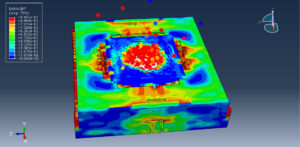
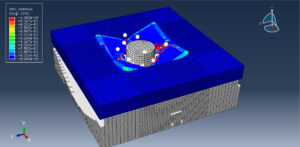
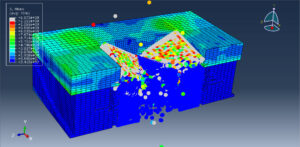
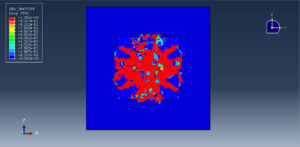
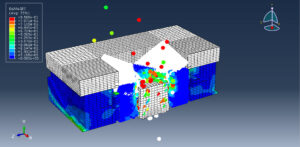
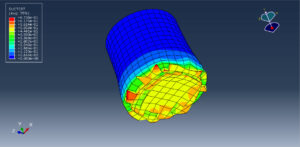
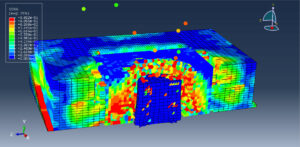
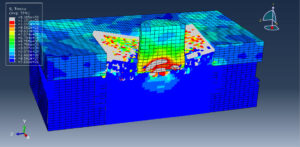
 Abaqus tutorials Abaqus tutorials
Abaqus tutorials Abaqus tutorials
